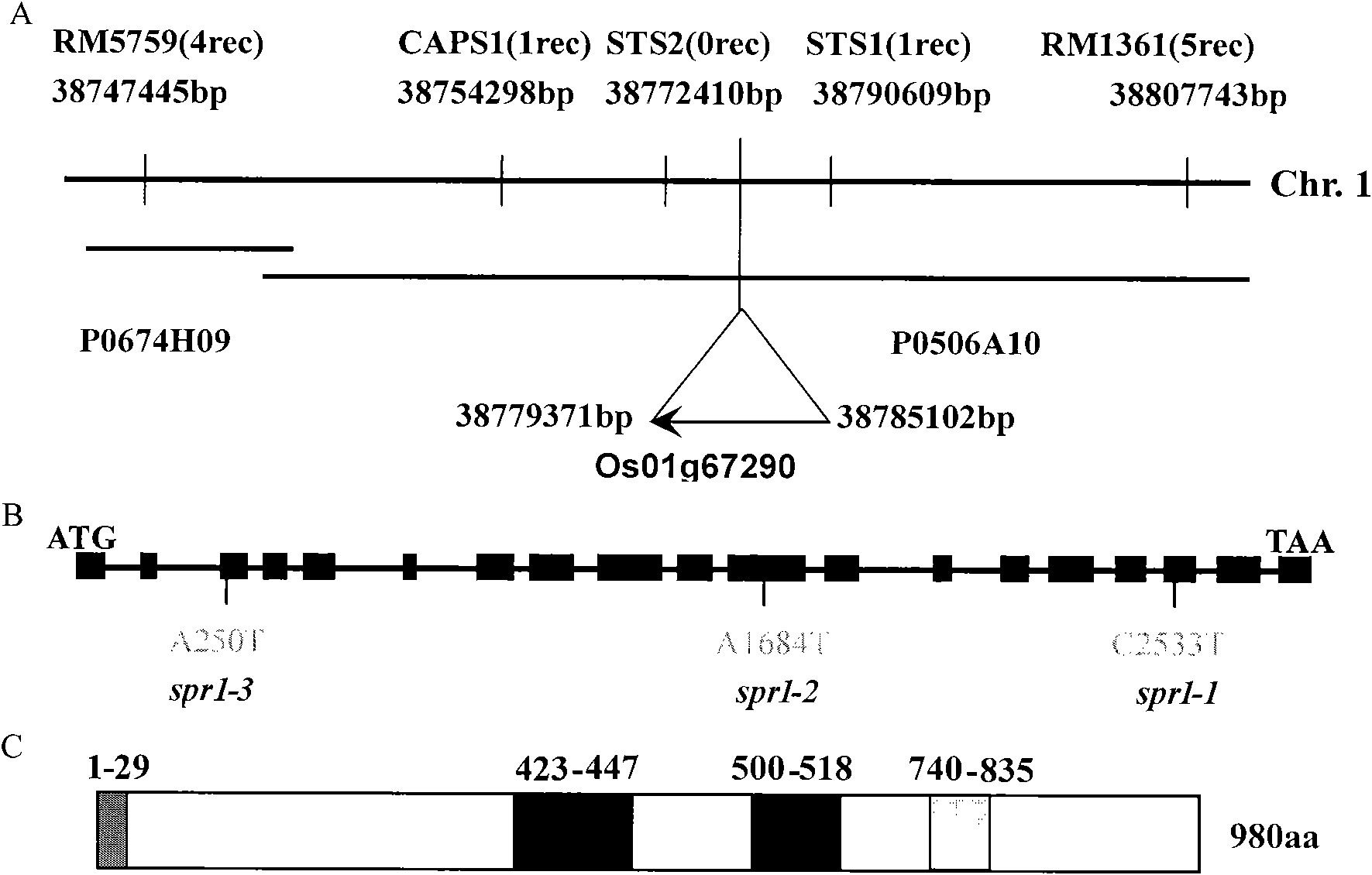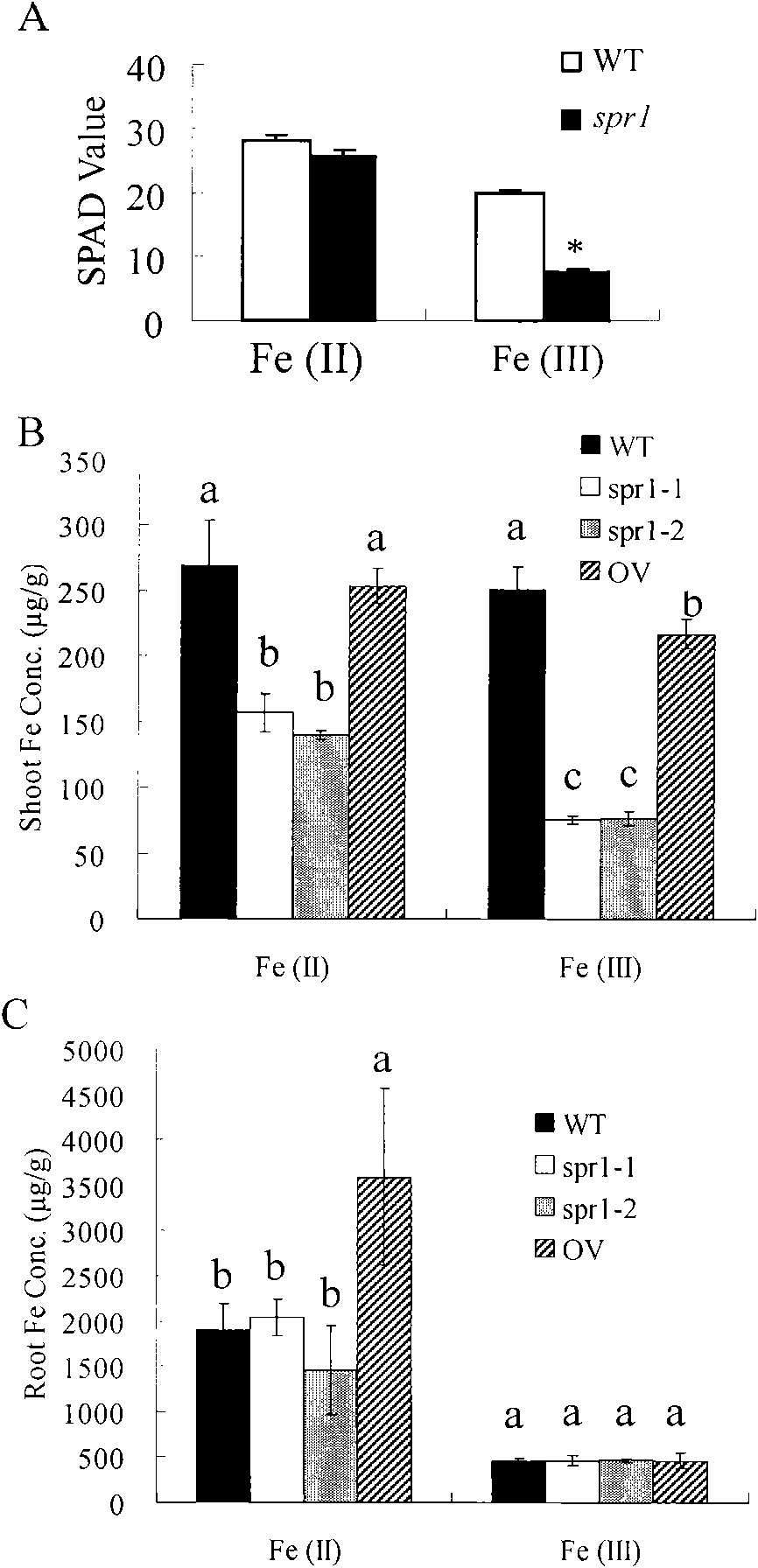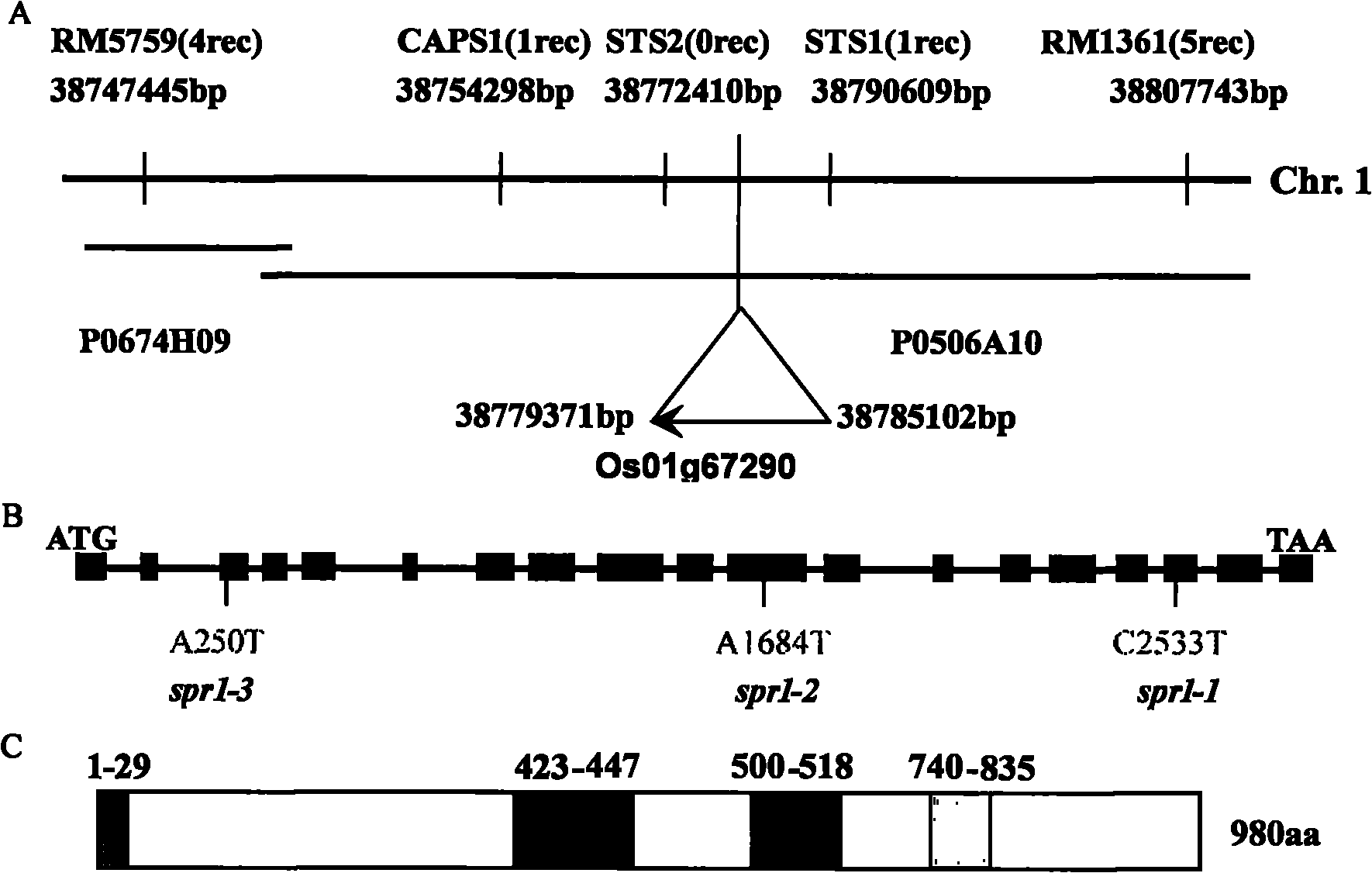Gene and protein encoded by rice root growth and development control gene OsSPR1
A protein and rice root technology, applied in genetic engineering, plant genetic improvement, fermentation, etc., can solve problems such as root length shortening
- Summary
- Abstract
- Description
- Claims
- Application Information
AI Technical Summary
Problems solved by technology
Method used
Image
Examples
Embodiment 1
[0025] Embodiment 1, screening and phenotype of mutants
[0026] Using the Kasalath mutant library induced by EMS as the mutant screening object, M 2 Seeds were rinsed with distilled water, 0.6% dilute HNO 3 Dormancy-breaking treatment for 16 hours, germination in the dark at 37°C until white. Sow the lubai seeds on the nylon mesh floating on the rice culture solution (the formula of the culture solution is the standard formula of the International Rice Institute), and cultivate it for 7 hours at a temperature of about 30 / 22°C (day / night) and 12 hours of light. The next day, the mutants were screened based on the change of root configuration (adventitious root length, lateral root length, adventitious root number, lateral root number, etc.), and a mutant with short adventitious roots and lateral roots was screened. There was no significant difference between the shoot length of the mutant and the wild type, and the main root length was slightly shorter, but the adventitious ...
Embodiment 2
[0030] Embodiment 2, gene localization
[0031] f 2 The mapping population was obtained by crossing the homozygous (OsSPR1) with the japonica rice variety Nipponbare, and a total of 1511 F 2 Individuals, using the rapid extraction method of rice trace DNA to extract genomic DNA for gene mapping from rice leaves. Take about 0.1 g of young rice leaves, freeze them with liquid nitrogen, grind the leaves into powder in a 1.5 ml centrifuge tube, extract the total DNA, and dissolve the obtained DNA in 200 μl sterile water. 2 μl of DNA sample was used for each SSR and STS reaction.
[0032] In the preliminary mapping experiment of OsSPR1 gene, 100 F 2 Individuals were subjected to SSR analysis. According to the published molecular genetic maps created by japonica and indica rice, select SSR primers that are approximately evenly distributed on each chromosome, perform PCR amplification according to known reaction conditions, and then separate by 7% acrylamide gel electrophoresis t...
Embodiment 3
[0034] Example 3, gene prediction and sequence analysis
[0035] According to the results of fine mapping, the Osspr1 gene is located within the 18.1 kb range between the STS1 and STS2 markers on the BAC clone P0506A10 ( figure 1 Middle A). According to the rice gene annotation information of TIGR (http: / / www.tigr.org / tdb / e2k1 / osa1 / ) and the EST database (http: / / www.ncbi.nlm.nih.gov / ), the mapped chromosomal regions In-segment gene prediction analysis, there are 2 unknown genes in this interval. The two genes were amplified using the cDNA of Kasalath wild-type and OsSPR1 mutant roots as templates, and the amplified products were sequenced separately, and the sequencing results were compared and analyzed. In the mutant, a single base mutation occurred in the ORF (LOC Os01g67290) of one of the genes. C was changed to T at 2533bp of the gene, and a premature stop codon appeared, resulting in the deletion of 136 amino acids at the amino acid terminal. Then we sequenced the gene...
PUM
 Login to View More
Login to View More Abstract
Description
Claims
Application Information
 Login to View More
Login to View More - R&D
- Intellectual Property
- Life Sciences
- Materials
- Tech Scout
- Unparalleled Data Quality
- Higher Quality Content
- 60% Fewer Hallucinations
Browse by: Latest US Patents, China's latest patents, Technical Efficacy Thesaurus, Application Domain, Technology Topic, Popular Technical Reports.
© 2025 PatSnap. All rights reserved.Legal|Privacy policy|Modern Slavery Act Transparency Statement|Sitemap|About US| Contact US: help@patsnap.com



